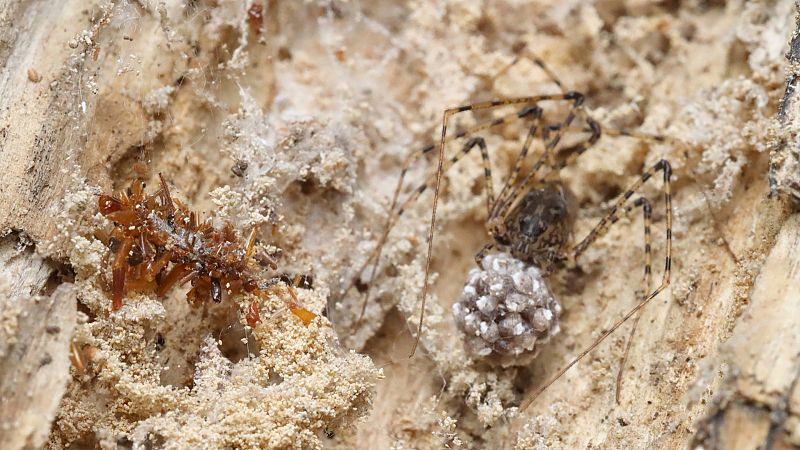
A newly discovered carnivorous caterpillar that wears the remains of its prey has been dubbed the “bone collector.”
The odd insect is only found on the Hawaiian island of Oahu. It creeps along spiderwebs, feeding on trapped insects and decorating its silk case with their body parts.
Nature’s macabre disguise
There are other meat-eating caterpillars that “do lots of crazy things, but this takes the cake,” said study author Dan Rubinoff with the University of Hawaii at Manoa.
Scientists think the ‘boneyard’ on its back might act as camouflage, allowing the caterpillar to feast on the spider’s ensnared meals without getting caught.
A host of caterpillars native to Hawaii use silk glands to spin protective cases studded with lichen, sand and other materials. This one is the first, however, to use ant heads and fly wings.
“It really is an astonishing type of case,” said Steven Montgomery, an entomology consultant in Hawaii who was not involved with the new study.
This ancient species may be under threat
Findings were published Thursday in the journal Science. Scientists found just 62 of the carnivorous caterpillars in over 20 years of observing.
Predatory caterpillars are extremely rare, and the bone collectors found in Hawaii will even sometimes eat each other, researchers said.
The bone collector’s origins date back at least six million years, making the caterpillar more ancient than the Hawaiian islands themselves. Today, they dwell on an isolated patch of mountain forest alongside invasive species.
“There is really a concern that we need to do better with conservation,” said Rubinoff.
Tiny discoveries hold big implications
While this caterpillar may seem like an odd outlier, it’s part of a much larger world of insect biodiversity that scientists are only beginning to understand.
Recent studies suggest Earth is home to around 20 quadrillion ants – 2.5 million ants to every single human – that collectively outweigh all wild birds and mammals combined.
Despite their abundance, insects remain a blind spot in biodiversity research. Many species go unnoticed, under-studied or undocumented altogether, especially in remote ecosystems like those found in Hawaii.
But they’re also vital for environmental well-being.
Insects play essential roles in pollination, decomposition and pest control. They’re also emerging as indicators of ecosystem health and even sources of innovation.
From fungi that turn fruit flies into zombies to carnivorous caterpillars, these creatures may offer insights into evolution or ecological resilience.
When it comes to strange new species like the “bone collector”, it’s clear that the world’s smallest inhabitants may hold some of its biggest scientific surprises.







